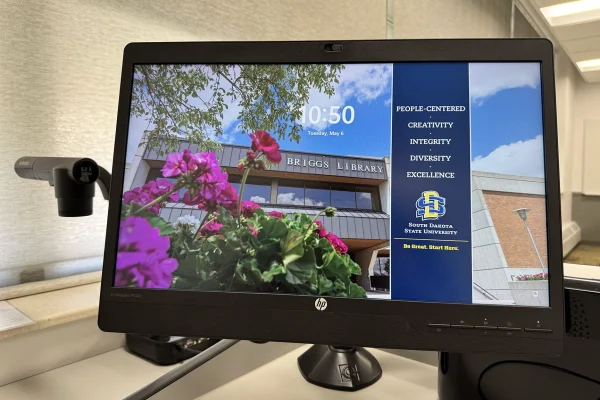Editorial:Honors Hall residents may get gender-neutral bathrooms if university officials see practicality and a need for the change.
September 28, 2016
We know gender-neutral bathrooms is a controversial topic. This is South Dakota, where loud opposition to the change echoes across the state. But this is an issue that must be addressed.
We, at The Collegian, believe gender-neutral bathrooms belong on the South Dakota State University campus.
A proposal was submitted to University Housing and Residential Life this spring, suggesting one women’s bathroom on each of the connected floors in Honors Residence Hall be changed to a gender-neutral bathroom. This idea was proposed to resolve a lack of bathroom space for males in the residence hall.
The female-to-male ratio in the hall fluctuates throughout the year based on room changes, but right now the lowest numbers of males on a floor add up to 12 male residents at the lowest count on one floor.
There are only three bathrooms for these 12 students to share.
Each stall in the Honors Hall is actually a one-person bathroom with a toilet and shower inside. The stalls aren’t the regular public-restroom-type stalls; they have full-frame doors with deadbolt locks on them to ensure privacy. Sinks and cubbies, to put residents’ shower supplies, are in a communal area in the actual public bathroom area.
This type of design is the same for the women’s bathrooms in the hall. But they have seven bathrooms. The women have one bathroom on the far side of the hall reserved for girls with three stalls. They also have a four-stall bathroom in the middle of the floor.
This middle bathroom is the one that may become a gender-neutral bathroom if university officials find that it is a practical change and is needed on the floor.
Presented in this situation, we, at The Collegian, think this change makes sense and solves the lack of bathrooms for the male population in Honors Hall. The only downfall to the proposal is that university officials will not take a political stance on the matter and will hide behind practicality rather than embracing their mission of inclusion at the university.
Arguments against gender-neutral bathrooms include a risk of sexual assault or peeping inside stalls, uncomfortableness for people being in the same environment as the opposite gender and potential for bathrooms to be dirtier because guys aren’t well-known for their cleanliness.
But a person with intentions of sexually assaulting another individual in the bathroom will not care if the sign on the door is male or female. Changing to a gender-neutral bathroom doesn’t change this person’s intentions.
In the case of Honors Hall, there’s not a chance for peeping in between the gaps of the stalls because there aren’t any stalls. The full-frame doors prevent any peeping and the deadbolt lock ensures security and privacy inside the bathrooms.
Students won’t be forced to use the gender-neutral bathroom. There will still be three women’s stalls and three men’s stalls on each floor if the student doesn’t feel comfortable sharing a bathroom with the opposite sex. But going to the bathroom isn’t sexual — it’s a natural process behind a closed door.
There’s plenty of resistance to gender-neutral bathrooms in South Dakota because of these arguments. But there are safeguards against many of these arguments and worries in the case of Honors Hall. People should be open to other lifestyles and recognize that some students don’t feel comfortable choosing a men’s or women’s bathroom.
If this proposal does go through the university, we, at The Collegian, hope to see gender-neutral bathrooms across campus in time. This doesn’t just include residence halls where there’s probably a similar need for more bathroom space as in Honors, but other areas of campus as well.
Changing binary one-person bathrooms into gender-neutral bathrooms would make life much easier. Already, some people, especially women, will use a male-designated bathroom if the wait line is too long for the women’s bathroom. Switching the one-person, binary-designated bathrooms to gender-neutral, like the binary-labeled bathrooms in Morrill Hall near Doner Auditorium, will relieve those wait lines.
These changes also benefit families. If a father or mother needs to take their child to the bathroom but the bathroom designated for their gender isn’t available, a gender-neutral bathroom would take away that stress.
But behind the possibility of change and inclusion is how university officials aren’t making this change for the sake of inclusion, but for practicality’s sake. SDSU officials look like they’re addressing inclusion at SDSU, but they’re actually not.
Officials have to hide behind the logic and practicality of gender-neutral bathrooms because they can’t face confrontation against their actions on a political stance. SDSU officials know they can’t afford to make such a political stance supporting gender-neutral bathrooms for the sake of inclusion in South Dakota.
No matter what decision is made though, it will be a political statement — there is no neutral stance on this issue.
Stance:
This is absolutely practical, but SDSU officials cannot only address it as such. No matter how much officials deny it, this is a politically-charged issue.





















